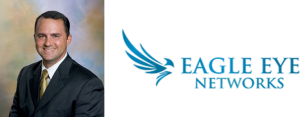ONVIF Newsletter December 2020

Greetings from Per Björkdahl,
Dear friends,
As 2020 nears its end, our world continues to be an unsettled place. The ways in which we normally go about our business and personal lives continue to change, and we continue to find ways to adjust to new restrictions and policies and procedures to keep our fellow global citizens safe.
While the COVID-19 pandemic is undoubtedly one of the worst crises we’ve yet faced in our lifetimes, many of the other challenges we continue to face to keep our cities safe are not new. The recent spate of attacks in Europe, political protests around the world, empty office buildings and idle city streets are reminders that we need a cohesive picture of public safety, traffic and environmental conditions of our cities.
The technology that enables us to assemble this information relies heavily on the ability to integrate different technologies offering specialty functions into a complementary management platform – license plate recognition or traffic cameras to monitor vehicle speed and pedestrian activity at intersections, air quality sensors, fill-level sensors on municipal trash bins, or gunshot detection analytics. Standards that dictate how all of this data is communicated are key to driving our smart cities forward, so municipalities can choose the right technology for their specific application.
At ONVIF, we are proud to have a few tools to aid in smart city initiatives. Our recently introduced Release Candidate for Profile M standardizes the communication of metadata and event handling of analytics for smart applications. This furthers the freedom of choice for end users by decoupling software and hardware and enabling the mixing and matching of video analytics and hardware from different providers for a more open system approach. Profile M also enables integration between IP cameras or analytics applications with IoT systems, another critical component of the smart city infrastructure. You can read more about Profile M further on in this newsletter.
For public safety and law enforcement teams, our Export File Format enables incident response or forensic teams to view recorded video of an event much more quickly by providing a common file format and video player. This ensures that these teams can access the video files regardless of the proprietary methods from different manufacturers to export recorded video, saving valuable time when formulating an incident response plan.
As we head into 2021, there will no doubt be new challenges that await us in our cities. By continuing to build on the interoperability of our existing platforms with innovative approaches and solutions, I am confident that we will be able to meet whatever obstacles might come our way.
Kind regards,
Per Björkdahl
Chairman, ONVIF Steering Committee
![]()
News
First Virtual Developers’ Plugfest Held in October
ONVIF hosted its 22nd ONVIF Developers’ Plugfest as a virtual event in October – supporting the continued demand for interoperable solutions. The event drew nearly 50 developers and engineers from 26 ONVIF member companies who gathered virtually over two weeks in October and completed nearly 200 hours of testing. Developers could test products independently for profile conformance, as well as assess interoperability between their devices and those from other manufacturers.
Read more about the plugfest in our press release here.
![]()
ONVIF Webcasts With Security Info Watch
ONVIF, along with SecurityInfoWatch.com (SIW) was pleased to present two webinars in October and November that discussed topics surrounding two upcoming profiles – Profile D for access control peripherals and Profile M for metadata and analytics for smart applications.
November’s webinar featured Per Björkdahl and Todd Dunning of the ONVIF Steering Committee discussing how the industry can overcome proprietary scenarios that limit the choice of analytics and hardware providers during this time of unprecedented innovation in analytics.
In October, Björkdahl discussed how integrators and end users could integrate touchless access control technologies from multiple vendors to create modern access control solutions. This is crucial for users, as many are migrating towards touchless technologies to provide a safe, secure and more comfortable building entry experience for visitors and employees. Björkdahl also discussed how ONVIF Profile D provides system security for edge devices installed in an unsecured location and how users can combine ONVIF profiles to provide an integrated access control and video access point at the edge.
![]()
Profile M Release Candidate Introduced
In September, ONVIF introduced the Release Candidate for Profile M, a draft specification that standardizes the communication of metadata and event handling of analytics for smart applications. This release ensures the continued relevance of ONVIF in the market, paving the way for increased interoperability with IP cameras, analytics applications and integration with IoT systems.
The main function of Profile M is to provide a standard way of communicating metadata between edge devices, such as IP cameras or analytic apps for devices, and clients – such as VMS, network video recorders or server, or cloud-based services. This is beneficial to systems integrators and end users looking to flexibly mix and match solutions from different providers of analytics, edge devices and video management software or cloud services, together with IoT applications, into one system.
You can find out more about Profile M here.
![]()
ONVIF Member Spotlight: Eagle Eye Networks, Inc.
Ken Francis. President, Eagle Eye Networks, Inc.

What does EEN do? What services, or products, do you provide?
Founded in 2012, Eagle Eye Networks, Inc. is number one in cloud video surveillance worldwide, addressing the needs of businesses, alarm companies, security integrators and individuals. Eagle Eye’s 100 percent cloud managed solutions provide cloud and on-premise recording, bank-level security and encryption, and broad analog and digital camera support – all accessed via the web or mobile applications. Businesses of all sizes and types utilize Eagle Eye solutions for operational optimization and security. All Eagle Eye products benefit from Eagle Eye’s developer-friendly RESTful API platform and Big Data Video Framework ™, which allow for indexing, search, retrieval, and analysis of live and archived video. Eagle Eye’s open Video API has been widely adopted for integration in alarm monitoring, third party analytics, security dashboards, and point of sale system integrations.
To read the full interview from Eagle Eye Networks, visit the ONVIF blog.